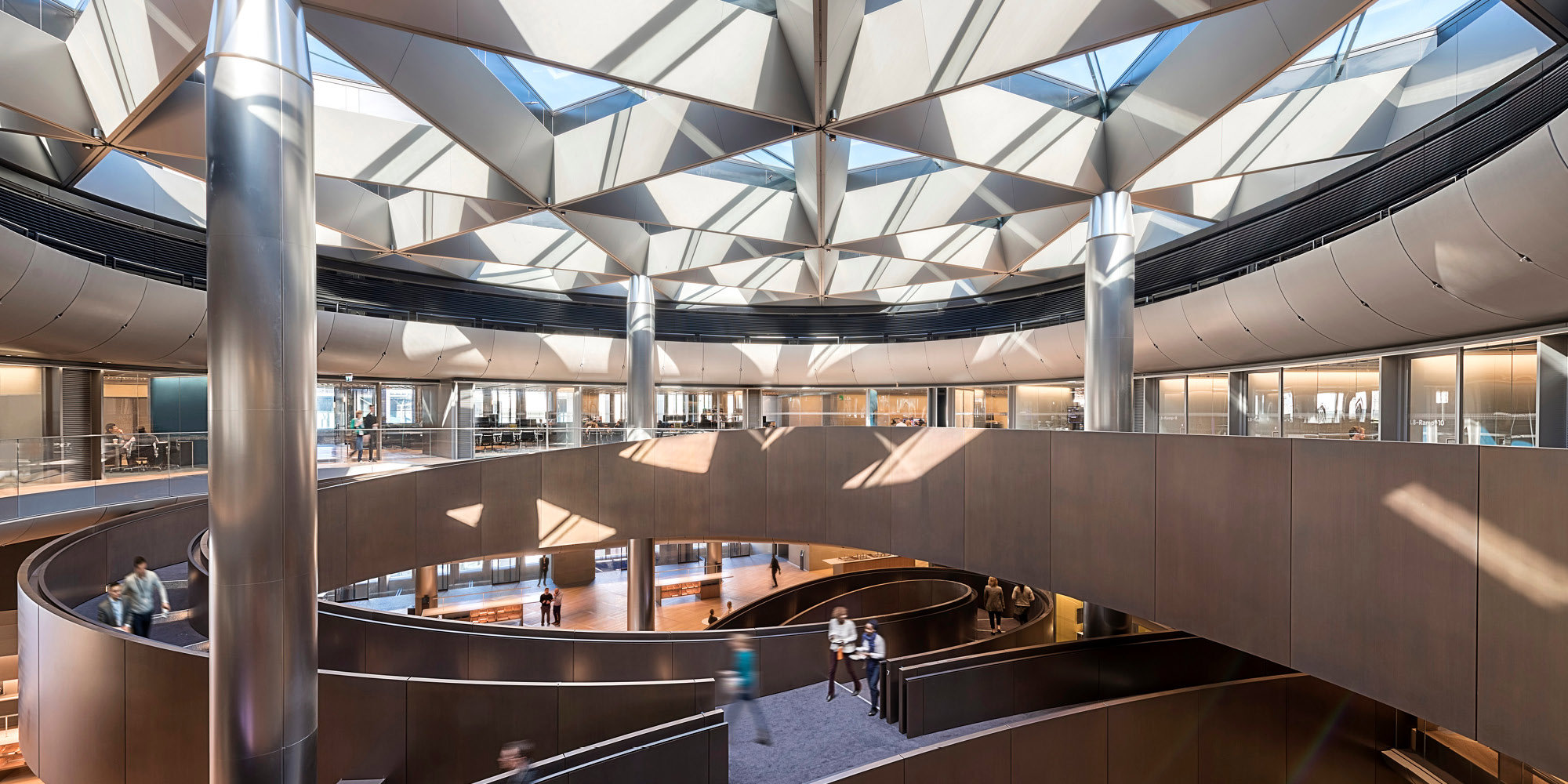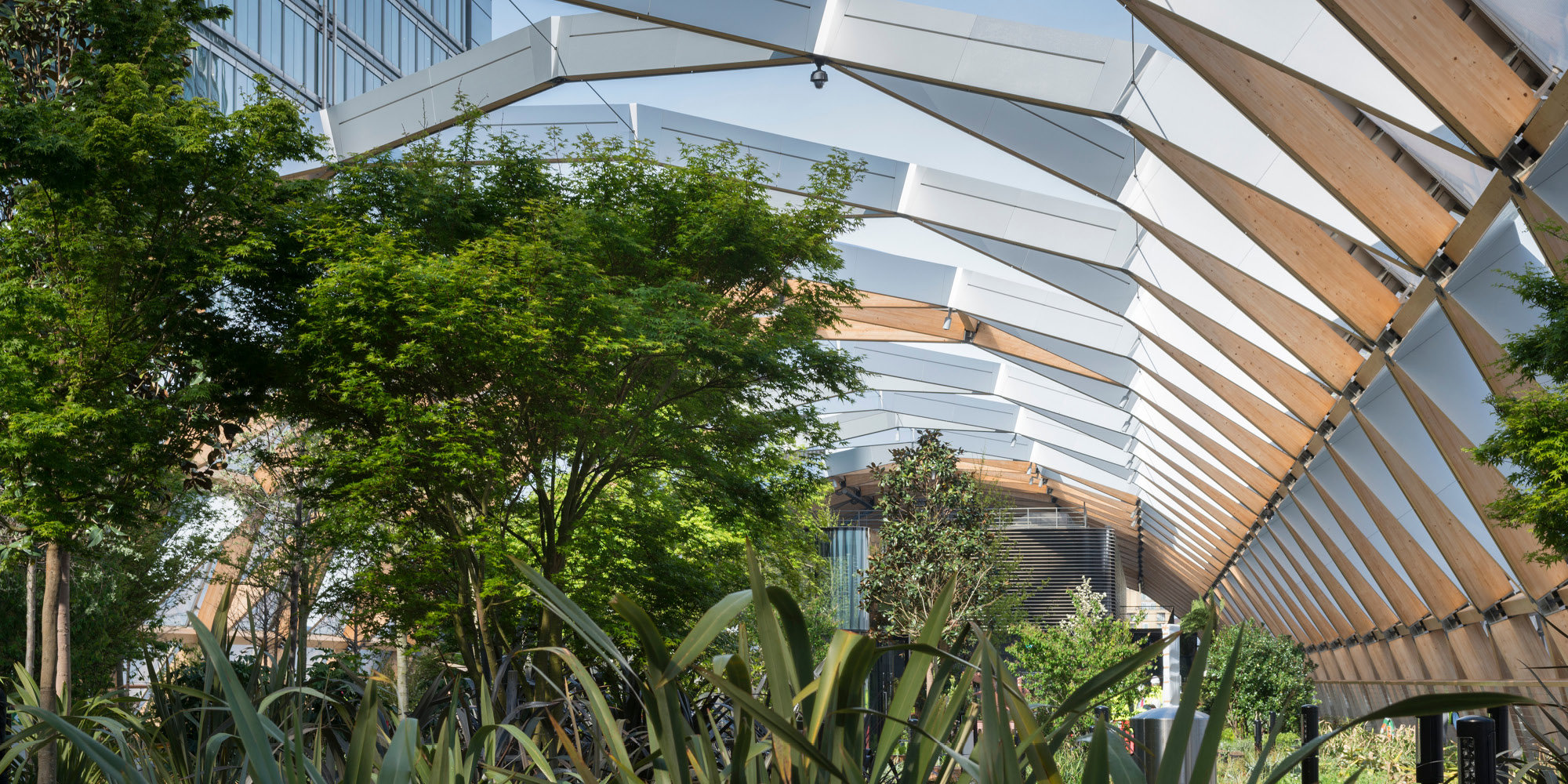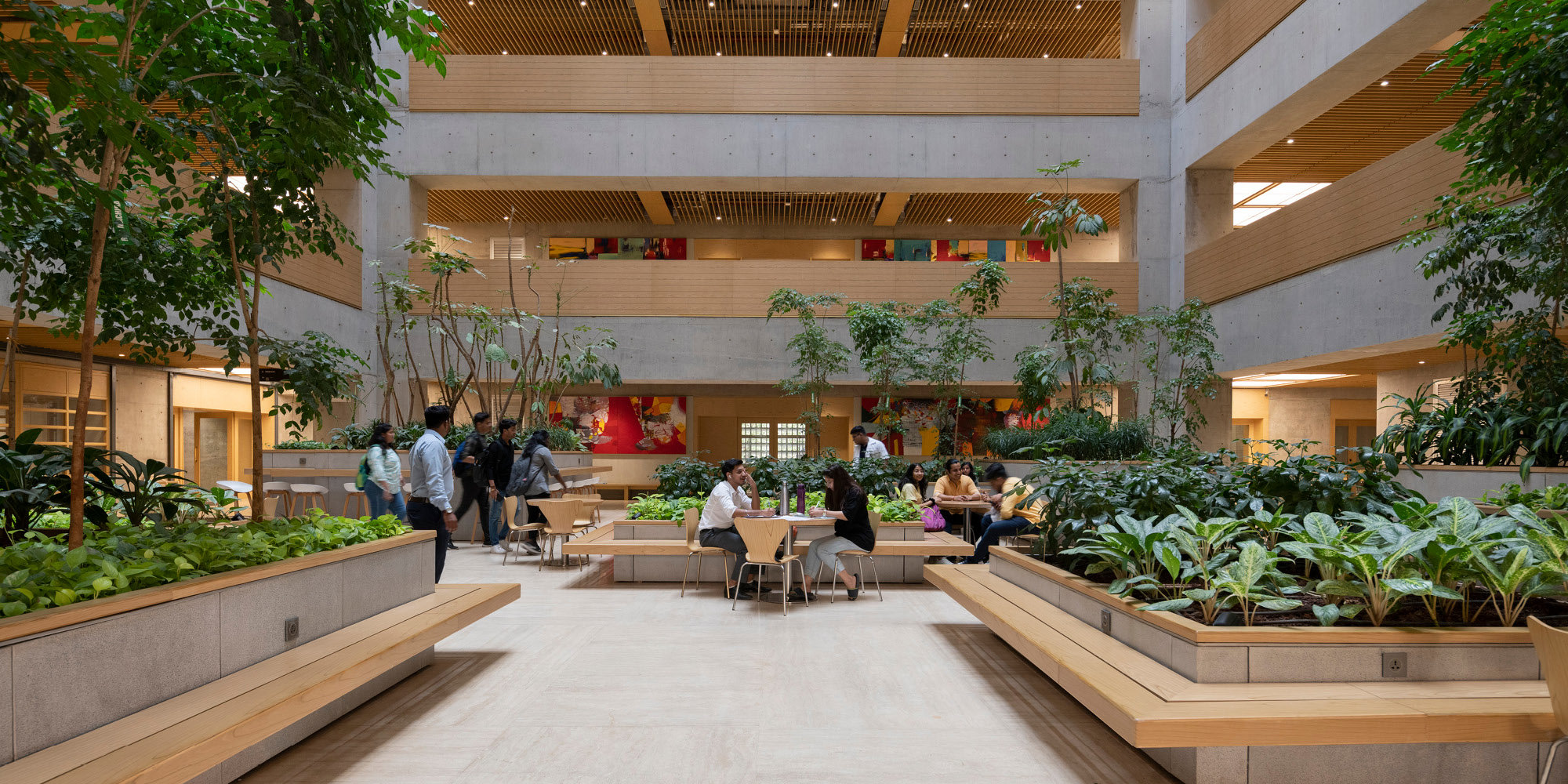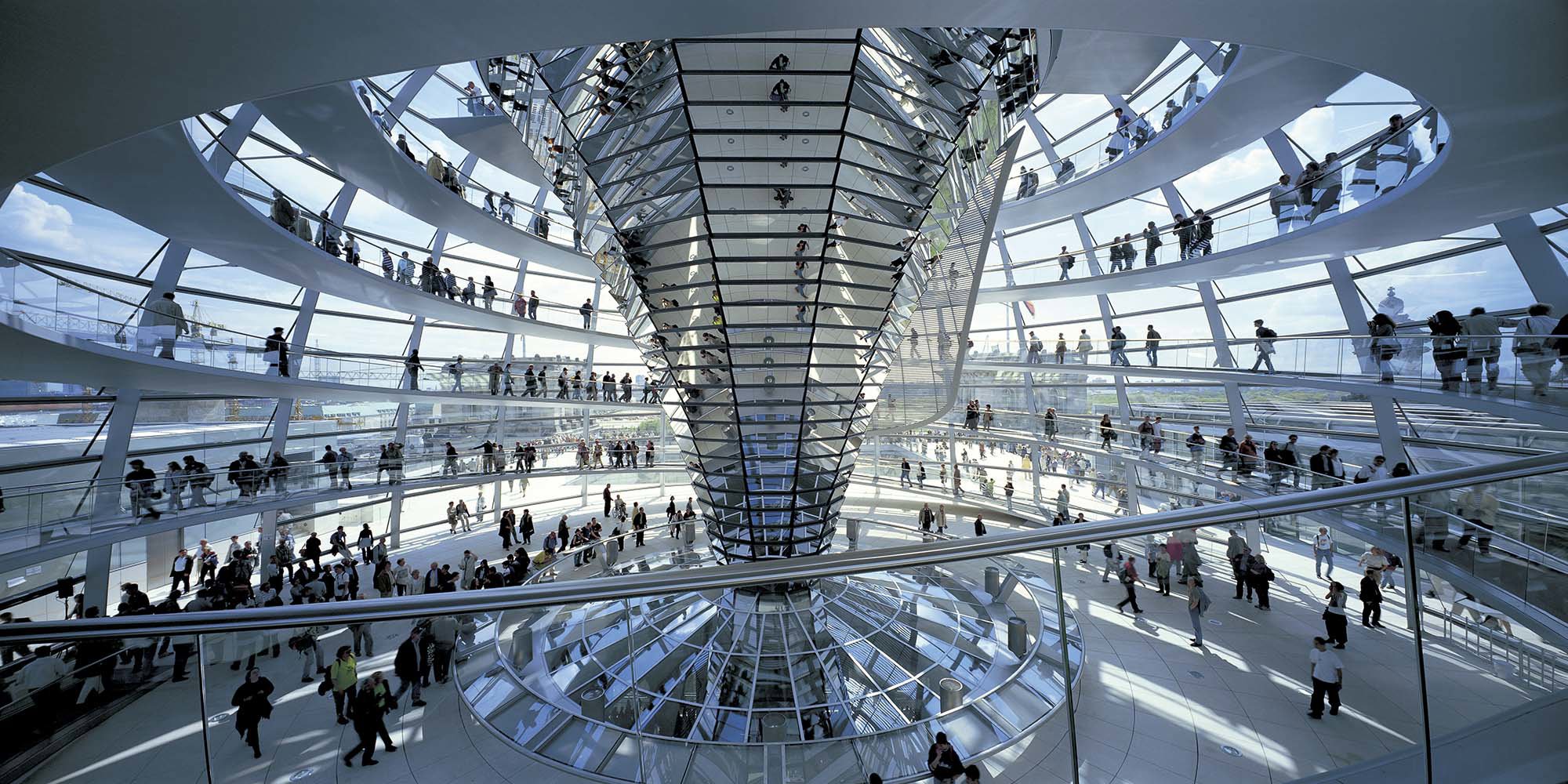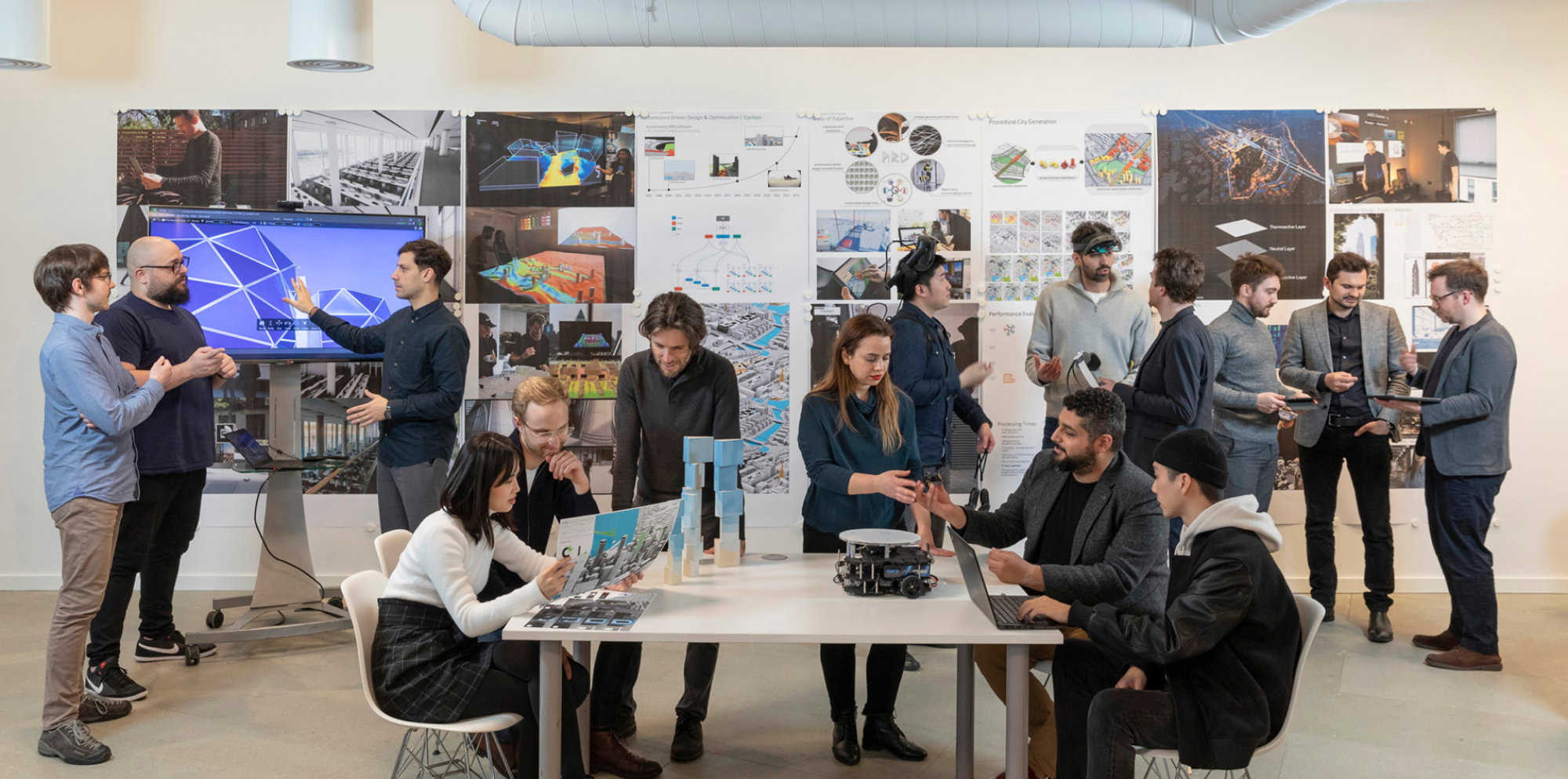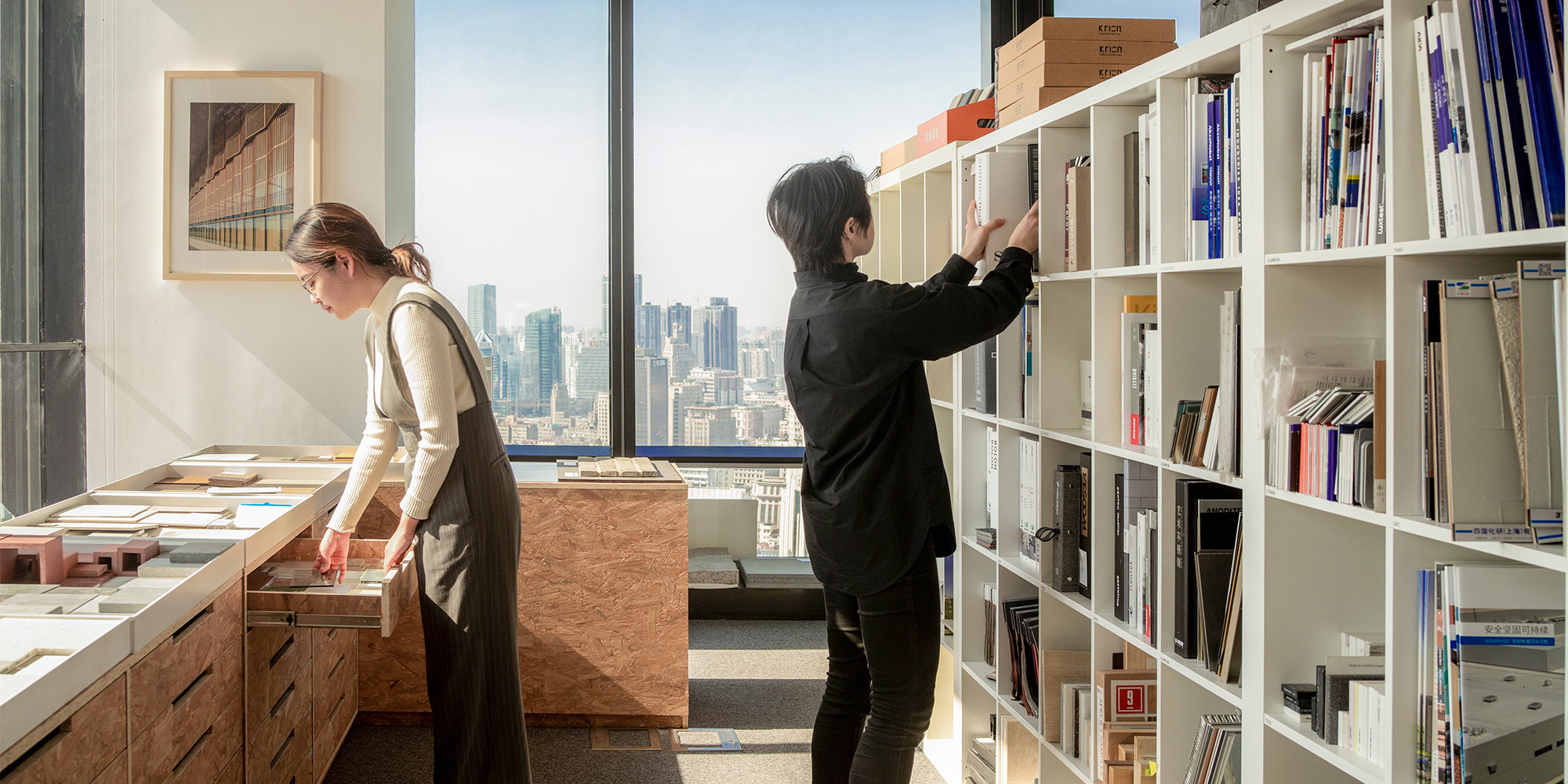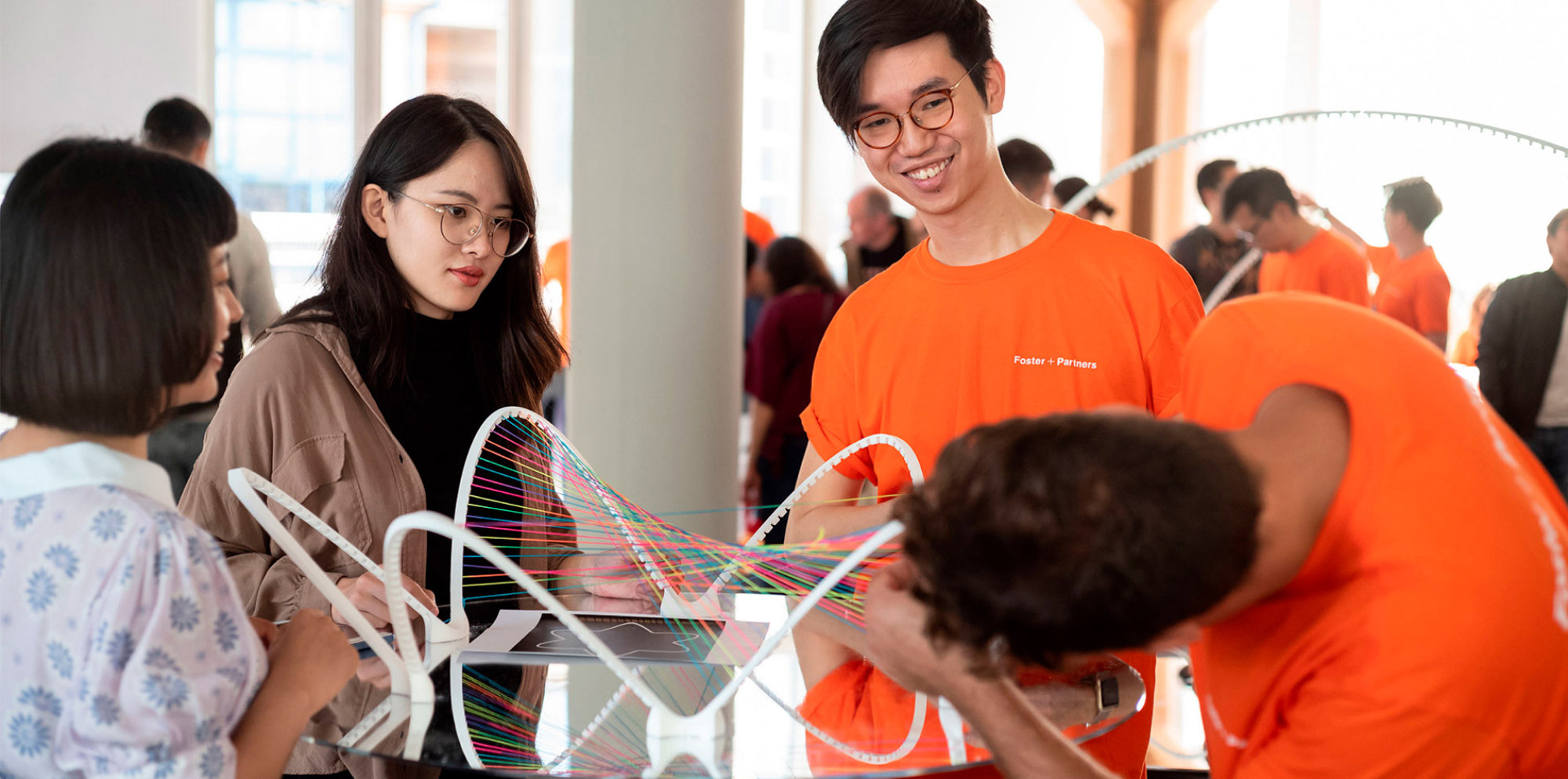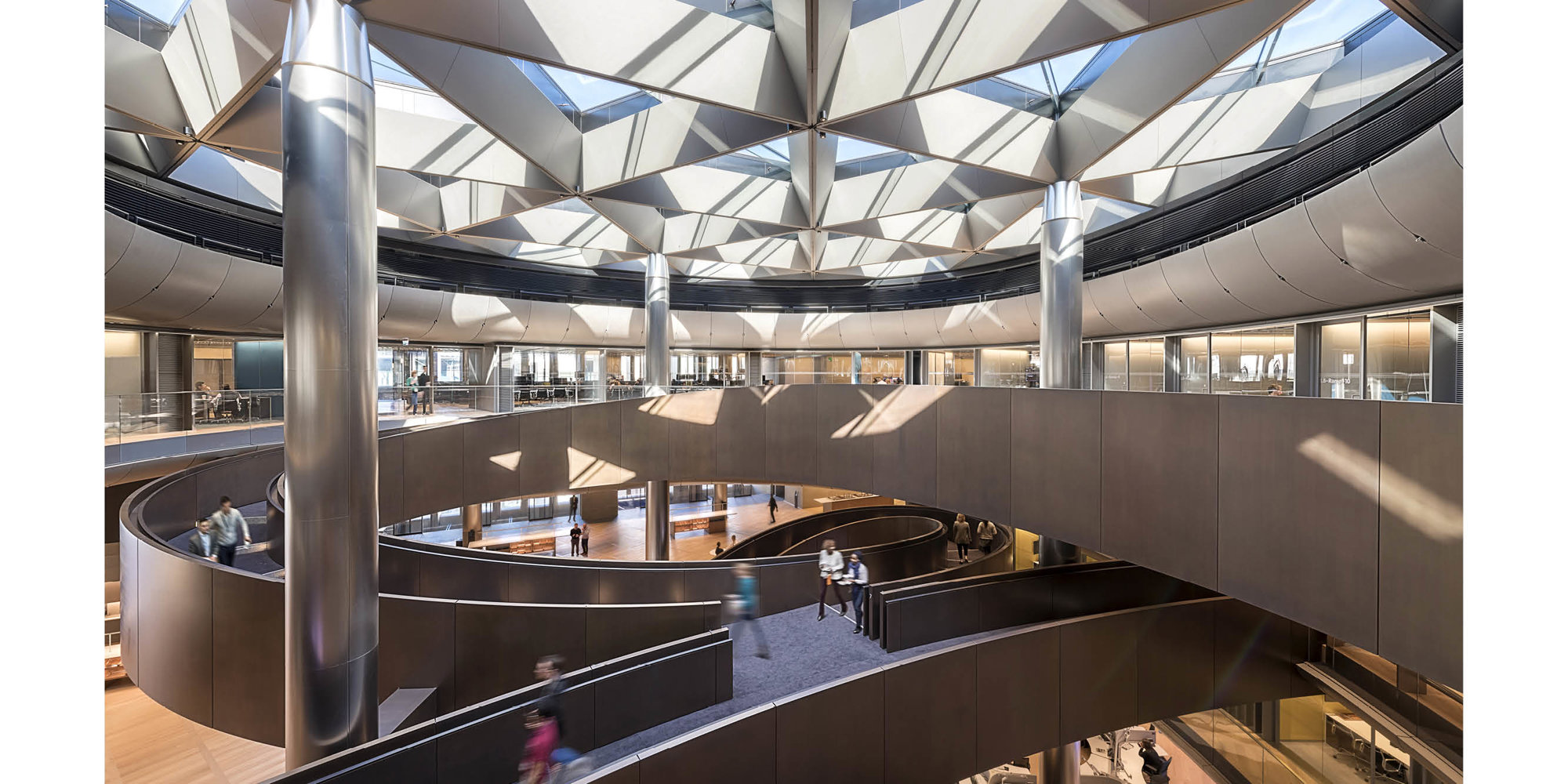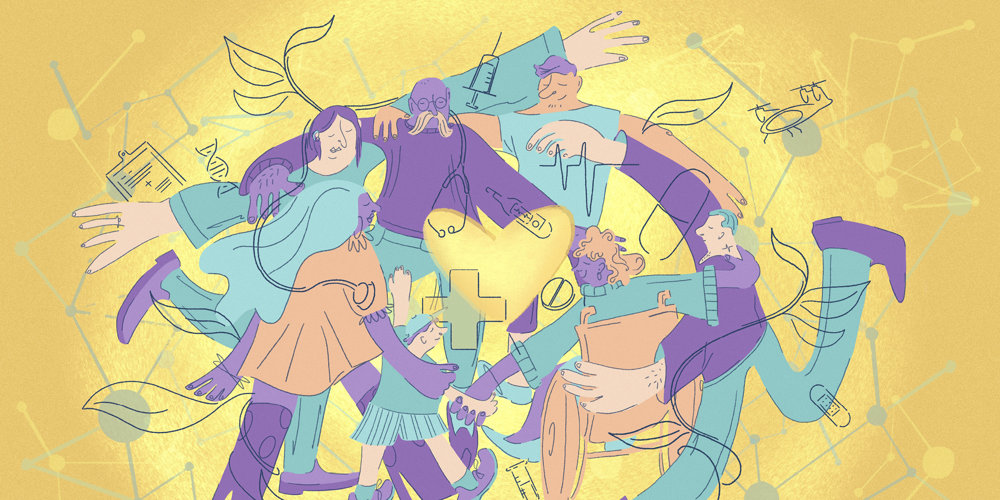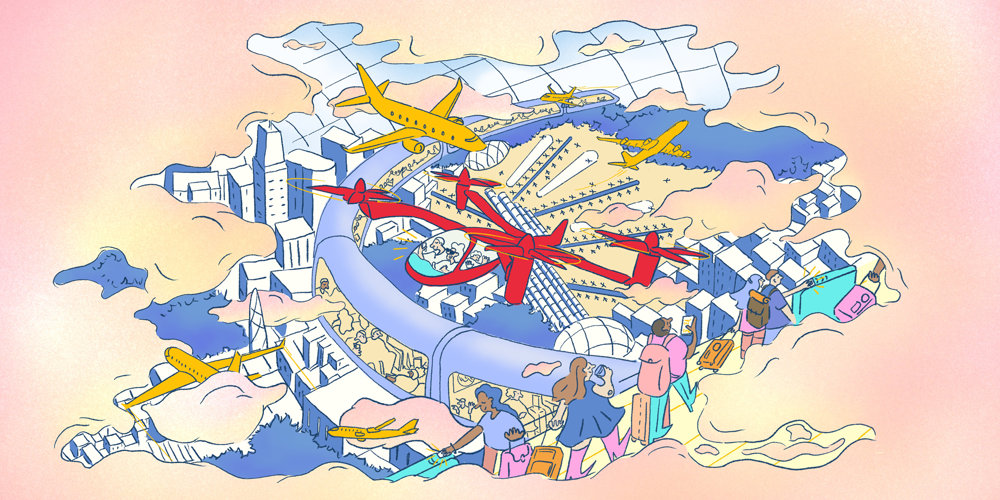Every month, different voices from the practice share their ideas about the future of the built environment. Covering a range of typologies – from healthcare to stadiums and airports – we are building a picture of tomorrow.
This month, we asked Kate Murphy, Alessandro Ranaldi, Grant Kanik, and Russell Hales about the workplace of the future, which actively improves employees’ health, aligns with values of social responsibility and sustainability, and provides a canvas for creativity.
